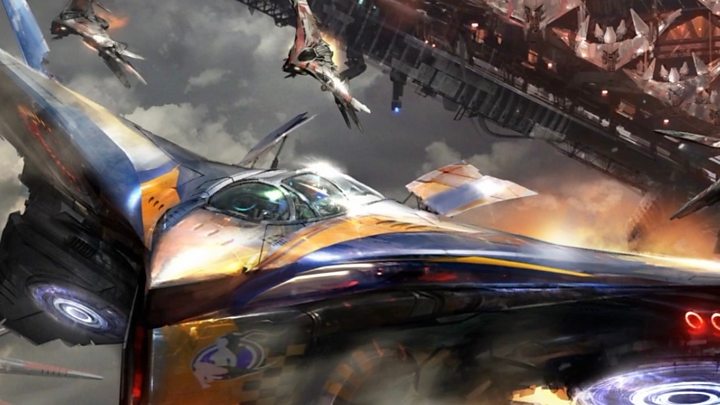
Media captionAtomhawk Design is displaying its work as part of the Great Exhibition of the North
With Avengers: Infinity War having taken $2bn (£1.5bn) at the box office, Marvel’s superhero films continue to dominate the cinema landscape. But just how do the comic book characters make the transition to the big screen?
It is now 10 years since Iron Man rocketed his way into cinemas, with Robert Downey Jr’s quick-witted charm winning over audiences across the globe.
And from the afro-futurist Wakanda to the gleaming Asgard and nightmarish Dark Dimension, advances in computer-generated effects and the studio’s blockbuster budgets have enabled filmmakers to push the envelope ever more.
But while the fantastical deeds of its costumed crusaders continue to thrill, the Marvel Cinematic Universe owes much of its success to the teams of unsung stars who never appear on screen.
For long before the films are released to sold-out showings amid a media frenzy, concept artists spend months painstakingly creating and honing the look and feel of each instalment.
“It’s totally critical [to the end product],” says Ron Ashtiani, director of Atomhawk Design, which counts Thor: The Dark World, Guardians of the Galaxy and Avengers: Age of Ultron among its portfolio.
“It’s a huge amount of pressure, but also really rewarding.”
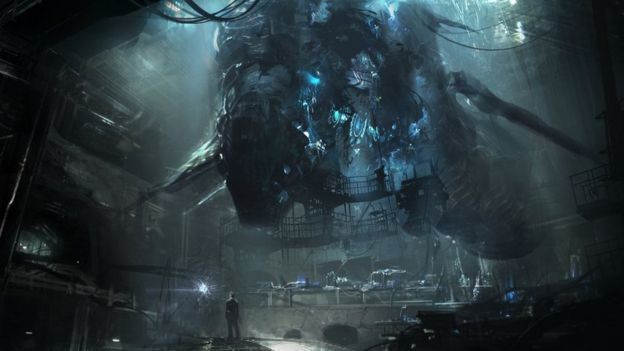
Image copyrightATOMHAWK/MARVEL Image captionThe Leviathan Chamber was among Atomhawk’s designs for Avengers: Age of Ultron
The studio, based in Gateshead in north-east England, is displaying examples of its work as part of the Great Exhibition of the North.
Atomhawk was enlisted by Marvel after impressing with its videogame design work.
That area of expertise, Ashtiani believes, lent itself well to the vision Marvel had for its films.
Working digitally with illustration software, its team of artists design and refine the appearance of characters, props and environments – often dozens of times over.
From initial sketches through to detailed scene shots, no stone is left unturned.
“Every project we work on, we do a significant amount of reference-gathering,” Ashtiani reveals.
“We explore real-world reference points and fiction.
“You’ve got to be careful not to create something that’s been done before. You can get easily influenced by things you’ve seen.”
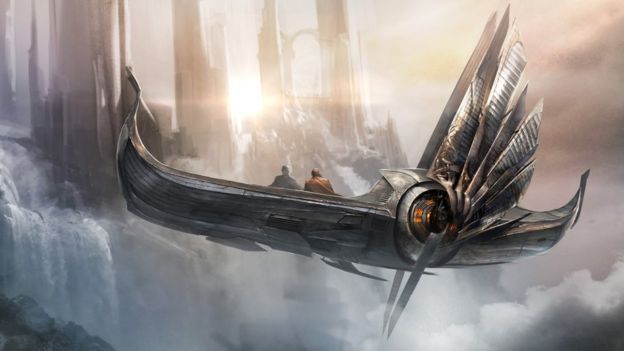
Image copyright ATOMHAWK/MARVEL Image captionThor: The Dark World saw Norse mythology combined with futuristic ideas
Tasked with adding “an extra layer of believability” to the second Thor adventure, the team dived deep into Norse mythology and created the Asgardian skiff by combining a Viking longboat with futuristic-looking technology and materials.
It would be the first Guardians of the Galaxy instalment, though, that provided the company with its biggest opportunity to stamp its authority on a film’s final look.
The comics, Ashtiani says, had “always been a bit niche”, without a settled visual identity.
“It was a new imagining of IP [intellectual property] for Marvel.
“We looked at pulp movies like Barbarella and Forbidden Planet – a lot of very colourful and comic sci-fi, as they wanted to take that kind of feeling and mix it with a modern sci-fi look.”
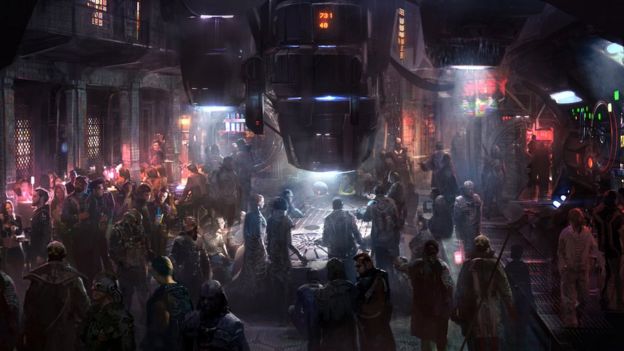
Image copyrightATOMHAWK/MARVEL Image caption The Boot of Jemiah bar would feature prominently in Guardians of the Galaxy
As drawn up by Atomhawk, the hero crew’s Milano spaceship as well as the Kyln interstellar prison and Knowhere – the floating giant skull of a celestial being – all took starring roles.
Far from a simple process, “upwards of 50 versions” of the spaceship were designed.
The 18 months of hard work ultimately paid off, though. “About 25%” of the firm’s ideas ended up on screen, having been realised by the film’s visual effects teams.
Director James Gunn was so impressed he later tweeted his approval, saying Atomhawk’s efforts had helped inspire a key scene between the villainous Thanos and Ronan.
While directors and production staff will no doubt have one eye on a film’s overall budget, concept artists are free to “dream big and think of any option possible,” says Martin Macrae, head of art at Oscar-winning visual effects company Framestore.
Headquartered in London and with offices worldwide, it has also worked on a number of Marvel projects including both Guardians films, Doctor Strange and Avengers: Infinity War.
“Budgets can cramp the creativity. If we can give examples of what something ‘could’ look like then the design can be adjusted to fit budgets,” he says.
“Because our process is so early on in the production, it is a natural evolution to have images and designs change.
“We can design a character, but if it moves through to the animation team and its body can’t move how the client wants, then adjustments will be needed.
“There are always times a design doesn’t make it into the film – it is the nature of the beast. We had some fun designs for a character in Thor: Ragnarok, but due to the budgets and timescales they were not carried through to the final cut.”
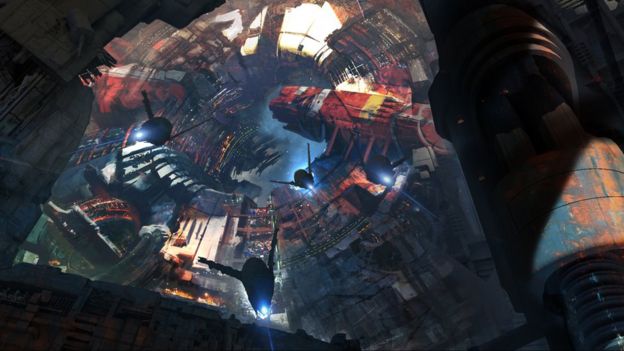
Image copyrightFRAMESTORE/MARVEL Image captionFramestore’s concept artists worked on designing Knowhere, from Guardians of the Galaxy
For the digital effects experts at Framestore who translate those creations into on-screen action, having a clear set of designs to work from is vital.
“It’s key to have concept art approved by the director and/or the client VFX [visual effects] supervisor before we start,” says Alexis Wajsbrot, the firm’s VFX supervisor.
“Before starting to texture an asset or create a piece of VFX, we ask our art department to come up with ideas and we explore options with them.
“It’s similar to how important it is to work on a storyboard before starting a physical shoot. It is possible to do it without it, but you lose a lot of time and might not even end up with the best possible shot.
“But even with the latest technology it is still very hard to adapt a concept and make it photorealistic. It’s a lot easier to paint FX than to simulate it.”
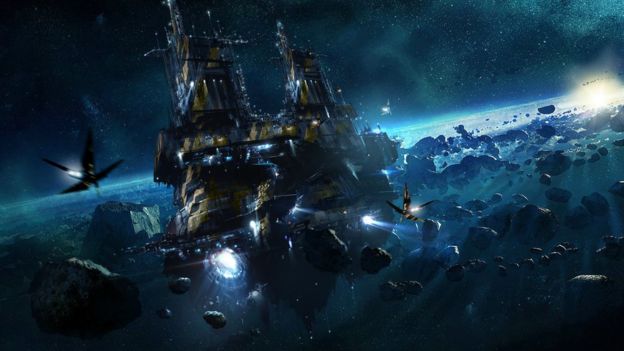
Image copyrightATOMHAWK/MARVEL Image caption The Guardians would break out of the Kyln interstellar prison facility
What, though, of those frequent amendments – do the redesigns create tensions within a team?
“You have to manage the crew’s expectations and let them know that a character will evolve,” Wajsbrot says. “Nothing is locked in until the last month of delivery.
“That is our role as a creative partner – to be as efficient as possible in adapting to the requests of clients and for the crew to be aware some of the work we are achieving will need to be tailored or reshaped.
“It’s part of the creative process – trial and error.
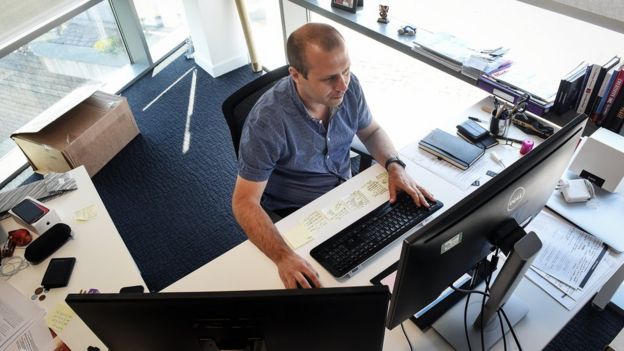
Image copyrightMARY TURNER Image captionRon Ashtiani says only the strongest ideas will make it on to the screen
For Atomhawk’s Ashtiani, the process and its focus on detail mirror a change in society as a whole.
“These days people in general are way more in tune with design,” he says.
“If you look at mobile phones and cars they’re highly designed. A car used to be a box with four wheels. At best you would have a choice of colours.
“The industry we’re in is quite Darwinian – it’s survival of the best idea.”


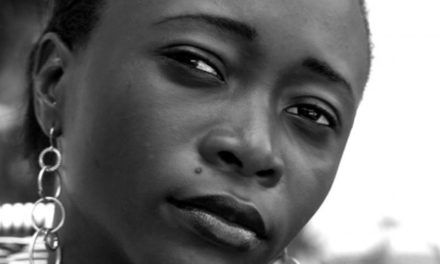

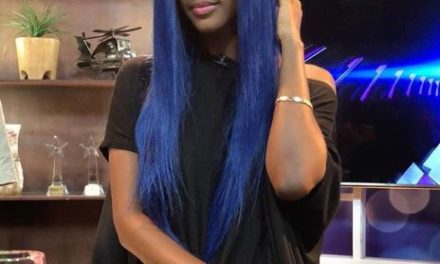
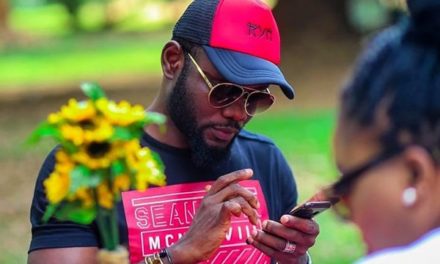
Facebook Comments